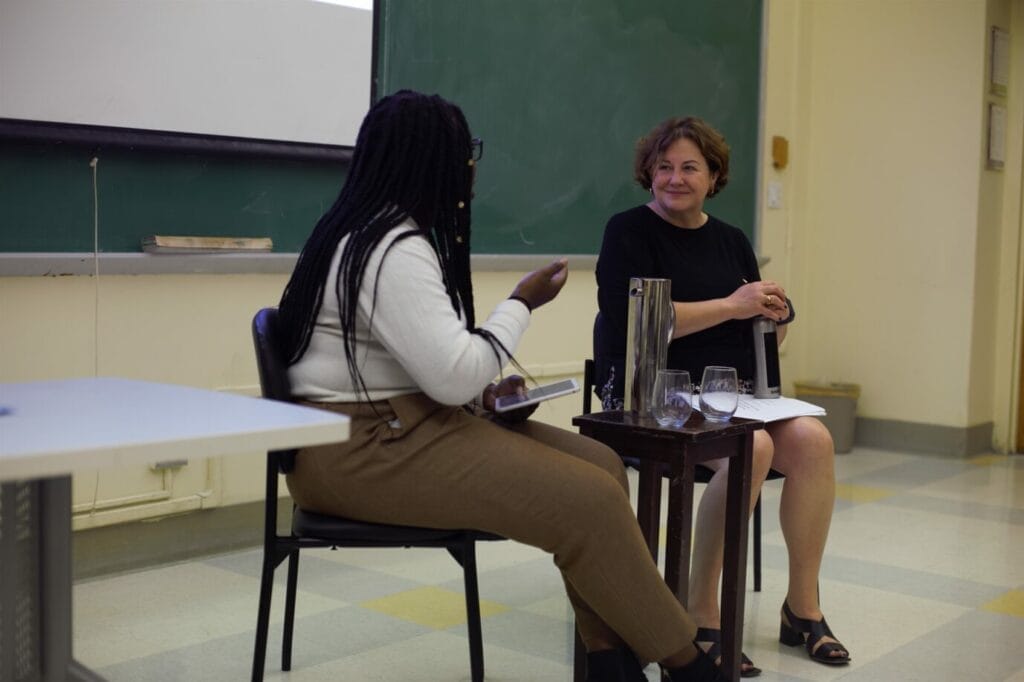As International Women’s Day approaches on March 8th, we join the global community to celebrate the theme of “Inspire Inclusion.”
In a world where diversity and belonging ignite innovation and growth, the leaders who reflect on the transformative power of inclusion within their organizations and take action to foster it will be the ones who come out on top.
Discover the top advice these six award-winning thought leaders are giving today’s leaders about cultivating an inclusive culture that empowers all employees. Their concrete, practical guidance reveals how organizations can go beyond celebrating diversity to embedding it as a core pillar of their strategic vision.
What’s the number one piece of advice you would share with today’s C-suite leaders on the importance of inclusion in their organizations?
Ruchika Tulshyan | Founder and CEO of Candour and Award-Winning Inclusion Strategist Who Guides Leaders on the Path to Creating Diverse Teams and Inclusive Cultures; Bestselling Author, “Inclusion on Purpose”
“Get comfortable with being uncomfortable. Making meaningful change means challenging the status quo. It means having uncomfortable conversations like educating other peers that the practices we take for granted in the workplace today – like salary negotiations, the hiring process, how pay and promotions – are determined and often riddled with biases. It is hard to stand up to sexism and racism in a difficult moment. And yet, there’s literally no other way if you’re committed to creating a diverse and inclusive workplace.
“Also, there’s no substitute for taking time to cultivate personal awareness and self-education. I recommend reading widely and consuming media (podcasts, newsletters, blogs, etc.) from a wide variety of thought leaders, not just the people in privilege or power.”
Michèle Lamont | Harvard University Professor and Renowned Authority on Group Dynamics Across Differences in Classes, Generations and Racial Groups Who Helps Leaders Create Workplaces Based on Recognition and Dignity; Author, “Seeing Others”
“Try to connect to employees as human beings with dignity. Signal that you value them not only as productive team members but also that you respect them, as individuals with personal preoccupations (e.g., families), as three-dimensional human beings.”
Kate Isaacs | MIT Sloan School of Management Senior Lecturer and Foremost Expert on Strategy and Culture Change that Facilitates Collaboration, Innovation and Inclusion
“Companies are facing huge talent gaps. They’re finding it hard to hire enough people with the right skills. A recent survey from the Manpower group found that 75% of employers globally report difficulty in filling roles.
In today’s competitive talent marketplace companies need to think differently about where to find talent.
“Many are discovering the solution is literally right in their own backyards. They are partnering with stakeholders in their communities to prepare people who have been left behind in the talent competition to compete in a global economy. Many company leaders are creating new partnerships with community colleges, apprenticeship programs, and technical trade schools. Others are banding together with peers to boost affordable childcare so they can employ parents who are willing to work. Still others are creating pathways for fair chance hiring, and then helping to upskill people who are returning to society from prison. All these approaches help companies fill talent gaps while giving people good jobs and a sustainable livelihood.
“Inclusion is critical for all these efforts. Yes, people need training, they need financial literacy support, they need affordable childcare. And they need managers and colleagues who care about them as a whole person. They need to be part of a company culture where they feel they belong, they can contribute, and they can grow.
“As many have said, inclusion is being invited to the party; belonging is getting invited to dance. Company leaders have to be prepared to not just invite people in, but also make sure they’re able to dance.”
Paola Cecchi-Dimeglio | Award-Winning Expert on Behavioral Science and Renowned Data Architect Helping Executives Make More Inclusive Decisions and Chair, Leadership Research Initiative for Women and Minority Attorneys, Harvard Law School; Author, “Diversity Dividend”
“There is one common thread among all companies: employees. However, not all workforces are alike. How we build, engage, and encourage our teams can make the difference between a good organization and an exceptional one.
“Today’s leaders must be well-versed in developing a workforce with diverse talents and perspectives. Knowing how to leverage data analytics to empower their decision-making is a cornerstone for fostering decision intelligence around their key asset — their talent.
“By doing so, leaders can unlock a wealth of creativity, drive deeper employee engagement, and foster a culture where everyone feels empowered to contribute their best. This approach not only enriches the organizational culture but also enhances competitiveness in an increasingly diverse global market.”
How does a leader inspire inclusion? What small, concrete steps can a leader take to improve inclusion in their organization, starting today?
Anne-Marie Slaughter | CEO of New America and Renowned Foreign Policy Expert, Leadership Advisor, Gender Equality Advocate and Entrepreneur Who Is Pioneering New Methods of Domestic and Global Problem Solving; Author, “Renewal”
“The most important thing that a leader can do to create a more inclusive organization is to routinely make sure that individuals who do not speak in a meeting have a chance to speak. That means reaching out and asking if they have thoughts on the subject at hand after others have spoken. Most importantly, the leader’s voice and body language must convey real respect and interest in what the speaker has to say. That attitude will immediately affect the way in which others in the organization behave regarding the person in question.
“Finally, whenever someone is interrupted as they are trying to make a point, the leader must follow the interruption by going back to the original speaker, noting that they were interrupted, and asking them to finish their thought. If someone else makes the same point later, be sure to credit it back to the original speaker.
“Given how much time we all spend in meetings, these behaviors, if practiced systematically, can make a real difference.”
Amy Gallo | Harvard Business Review Contributing Editor and Authority on Calm, Confident Conflict Resolution, Healthy Communication and Positive Relationships at Work; Author, “Getting Along” and Co-Host, Women at Work Podcast
“In inclusive organizations, people are far more likely to share their thoughts, ideas, and opinions, even ones that challenge the status quo. That’s what we want – and need – if we are going to grow as leaders and build thriving, successful organizations.
“One of the often-missing pieces when it comes to creating inclusive workplaces is the ability to navigate difficult conversations. Managers need to make it OK for all people — especially those from a diversity of backgrounds — to dissent, debate, and express their true opinions. They need to convey that it’s OK to not see eye-to-eye with your colleagues. It’s OK to push back on an idea.
“To lay the groundwork for this, leaders can make clear that disagreements are not only normal in the workplace, but expected. And they need to equip themselves and their people with the necessary skills to deal with the discomfort that accompanies these challenging conversations.”
“Develop curiosity, empathy and diversity. For the first point, curiosity means genuinely asking questions and listening to hear, not to respond or make a counterpoint. Empathy refers to the understanding that another person’s experience may not be the same as yours, particularly if they’re from a marginalized or underestimated group. And most significantly, diversity…seeking a wide variety of perspectives is so necessary. If you’re only listening to people who look like you, your leadership will be shortsighted, at best.” – Ruchika Tulshyan, Bestselling Author, “Inclusion on Purpose”
“Try to put oneself in the employee’s shoes to understand what being invisible, or less central or valued, feels like. This will help inspire small gestures and decisions that will help everyone feel included (not only women and POC but also older workers, immigrants, etc.).” – Michele Lamont, Author “Seeing Others”
What are the organizational consequences of not following through on inclusion?
“Less loyalty to employers, more ‘satisficing’ and pragmatic attitudes toward performing only what is expected, nothing more.” – Michele Lamont, Author “Seeing Others”
Organizations that prioritize diversity and equity need guidance on fostering a culture of inclusion in order to unlock the full potential of their workforce. Stern Strategy Group connects you with renowned thought leaders whose insights, strategies and management frameworks help organizations fuel growth and disruptive innovation to better compete in a constantly changing world. Let us arrange for these esteemed experts to advise your organization via virtual and in-person consulting sessions, workshops and keynotes.









